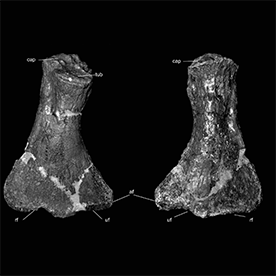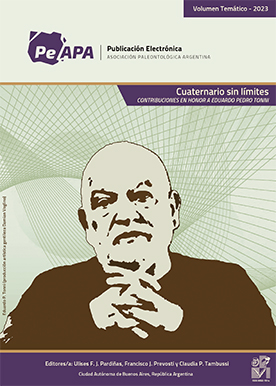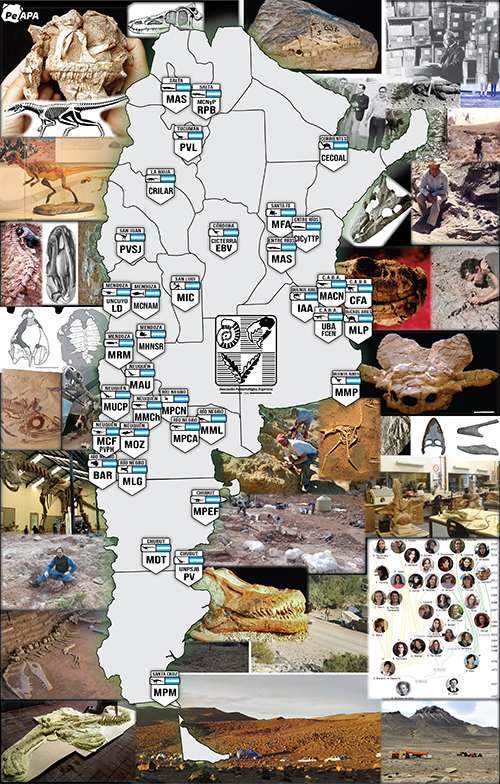PLESIOSAURS (DIAPSIDA, SAUROPTERYGIA) FROM LATE CRETACEOUS (LATE CAMPANIAN–EARLY MAASTRICHTIAN) MARGINAL MARINE ENVIRONMENTS FROM NORTH PATAGONIA
DOI:
https://doi.org/10.5710/PEAPA.13.05.2015.105Resumen
During the late Campanian and early Maastrichtian, Northern Patagonia suffered the first stage of the Atlantic marine ingression that reached the Neuquén Basin. The Allen and La Colonia formations show the early stages of this change, and were deposited in a complex asso- ciation of marginal marine environments, including coastal and marine deposits (i.e., flood plains, estuaries and lagoons). The plesiosaurs from the Allen and La Colonia formations included at least three species, each with a distinctive morphotype, representing a high diversity in the Late Cretaceous. The only species that preserved cranial material, Sulcusuchus erraini Gasparini and Spalleti, is a strange polycotylid characterized by the presence of deep grooves in the rostrum and mandible. The other two species correspond to aristonectine and non-aristonectine elasmosaurids. The former are distinguished by relatively large skulls and a high number of teeth compared to other elasmosaurids, whereas the non-aristonectine elasmosaurids are characterized by their relatively small body sizes, despite being adult specimens.

Descargas
Publicado
Número
Sección
Licencia
Derechos de autor 2015 Publicación Electrónica de la Asociación Paleontológica Argentina

Esta obra está bajo una licencia internacional Creative Commons Atribución-SinDerivadas 4.0.

Los/las autores/as conservan los derechos de autor/a y garantizan a la revista el derecho de ser la primera publicación del trabajo licenciado bajo una licencia CC Attribution-NonCommercial 4.0 que permite a otros/as compartir el trabajo con el reconocimiento de la autoría y de la publicación inicial en esta revista.




















